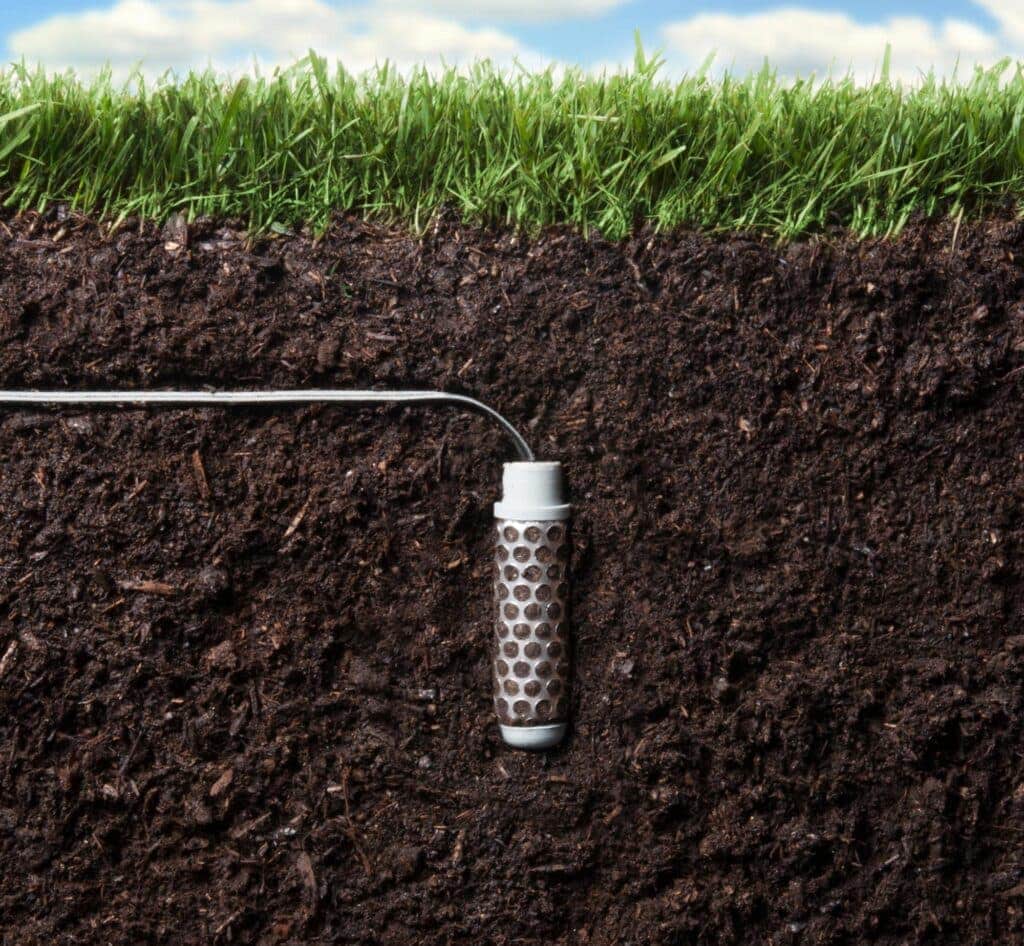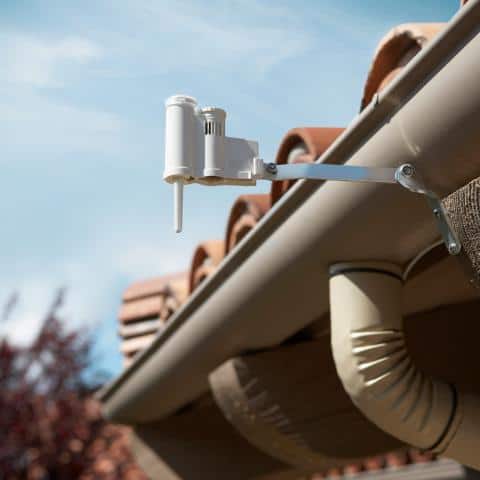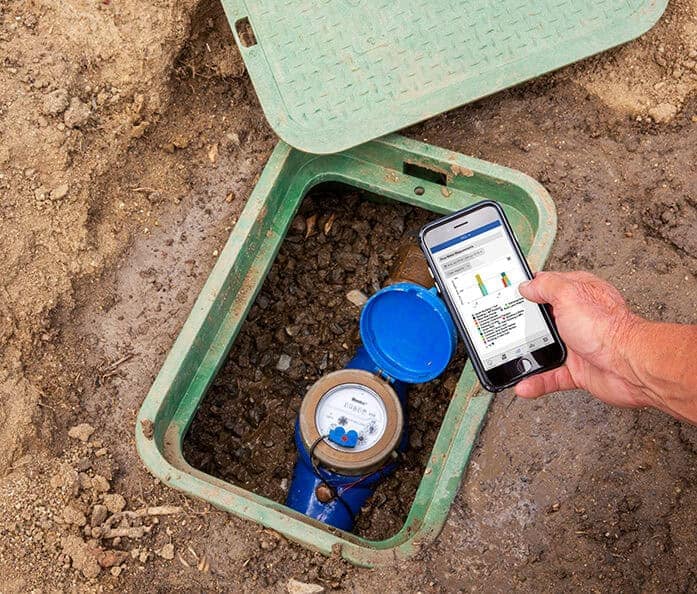The right sensor will prevent waste in the rain, pause in high wind or frost, water only when soil is actually dry, and catch leaks before they ruin a garden or water bill. Below we cover the best rain, soil, weather and flow sensors available at SunshowerOnline right now, how they pair with our most popular controllers, and practical installation tips so you get it right first time.
Why sensors matter (and how they work with your controller)
- Save water automatically: Rain and soil moisture inputs shut watering off when not needed.
- Real-time adjustments: Smart weather data based adjustments with modern controllers, but forecast can sometimes not mactch up with what actually happens… With irrigation sensors, you’re working with actual weather conditions.
- Protect your garden: Wind and freeze shut‑downs avoid damage and drift.
- Catch problems early: Flow monitoring flags leaks, stuck valves and breaks fast.
- Plug‑and‑play with modern controllers: Hunter Hydrawise, Rain Bird ESP (with/without LNK2), Orbit B‑Hyve and solid residential units all accept sensor inputs.
Quick selector: Best-in-class picks by goal
- “Just don’t water when it rains”: Pick a ‘rain sensor’; Hunter Mini‑Clik or Rain‑Clik; Rain Bird RSD; Orbit RX‑1; Consider wireless options when running cable isn’t suitable.
- “Water only when soil is actually dry”: Pick a ‘soil sensor’; Hunter Soil‑Clik; Rain Bird SMRT‑Y for site‑wide soil‑led control.
- “Adjust for local weather (sun, temp, wind) on site”: Hunter Solar Sync (wired or wireless); add Wind‑Clik or Freeze‑Clik where conditions demand it.
- “Monitor flow, detect leaks, get alerts”: Hunter HC Flow Meter for Hydrawise; Hunter Flow‑Sync for Pro‑C/HPC/X2; Rain Bird FG100/FS series; CST ELF for compact installs.
The Best Irrigation Sensors for Each Sensor Type
Wired Rain Sensors: The no-fuss water saver

Wired rain sensors are the traditional and reliable go-to option for most irrigation systems. Rainfall hits the sensor which opens (or closes) the irrigation systems electrical circuit, causing the system to shut off until conditions are dry again. The following are our preferred options:
- Hunter Mini‑Clik Rain Sensor
- Why it’s great: Proven, simple, adjustable rainfall set‑point, easy to mount on eaves or fence post.
- Best with: Any 24V controller. Perfect companion for Hunter X‑Core, X2, Pro‑C, Pro‑HC/Hydrawise, Rain Bird ESP‑TM2/ME3, Orbit Easy‑Set and B‑Hyve.
- When to choose: You want value-for-money insurance against watering in rain, and you have an easy cable path.
- Hunter Rain‑Clik (instant shut‑off)
- Why it’s great: Fast‑acting “Quick Response” shuts systems down as soon as rain starts—excellent for Melbourne’s changeable weather.
- Best with: As above, especially good for exposed lawns and hardscapes.
- Rain Bird RSD
- Why it’s great: Reliable, adjustable wired rain shut‑off with wide brand compatibility.
- Best with: Rain Bird ESP‑TM2/RC2/ESP‑ME3; also fine with Hunter, Orbit, Irritrol when wired to the correct NO/NC terminals.
- Orbit RX‑1
- Why it’s great: Budget‑friendly wired rain sensing.
- Best with: Orbit B‑Hyve and Easy‑Set Logic; compatible with other brands’ sensor terminals.
Wireless Rain Sensors: When more versatility is needed

Sometimes a wired rain sensor isn’t a practical option, becuase there’s no access to run a cable from your irrigation controller to a fully exposed location where an irrigation sensor needs to be installed. These are our recommendations:
- Hunter Wireless Rain‑Clik Kit
- Why it’s great: All the benefits of Rain‑Clik without running cable. Ideal retrofit or long distances from controller.
- Best with: Any controller with sensor terminals; a go‑to for established gardens.
- Rain Bird WR2 Wireless Rain Sensor
- Why it’s great: Trusted Rain Bird wireless performance with user‑friendly receiver at controller.
- Best with: Rain Bird ESP‑TM2/ME3/RC2; good across brands when matched to sensor inputs and logic.
Soil Moisture Sensors: Water only when the soil actually needs it

Soil Moisture Sensors seem like the logical choice, given the direct feedback from where the roots actually grow. But based on the technology we’ve seen & how controllers, lawns & gardens react, we’d still recommend rain sensors over soil sensors when given the choice. But there are still some very good options available if that’s the preference.
- Hunter Soil‑Clik Moisture Sensor
- Why it’s great: Simple, zone‑agnostic “allow/stop” based on adjustable soil set‑point; pairs well with any brand.
- Best with: Hunter X‑Core, X2, Pro‑C, Hydrawise Pro‑HC/HPC; equally good on Rain Bird or Orbit controllers with sensor inputs.
- Ideal for: Garden beds with mulch, shrubs, lawns where rainfall amounts don’t tell the whole story.
- Rain Bird SMRT‑Y Soil Moisture Sensor Kit
- Why it’s great: Soil‑led watering across the system with Rain Bird integration; reduces run time when soil is adequately moist.
- Best with: Rain Bird ESP‑TM2, RC2, and ESP‑ME3 systems.
On‑site Weather Sensors: Localised, automatic seasonal adjustment or shut-off

- Hunter Solar Sync (wired) and Wireless Solar Sync
- Why it’s great: Measures sun and temperature at your property to seasonally adjust programs automatically; integrates cleanly with Hunter controllers (and works with other brands’ sensor inputs in basic modes).
- Best with: Hunter Pro‑C, X‑Core & non-Hydrawise Hunter controllers; also helpful if you prefer on‑site sensing over cloud-only weather data.
- Hunter Mini‑Weather Station (with optional Freeze‑Clik)
- Why it’s great: Rolls rain, freeze and wind sensing into one compact unit for comprehensive weather‑based protection.
- Best with: Coastal/exposed sites, sports turf, larger residential or light commercial installs.
- Hunter Wind‑Clik and Freeze‑Clik (standalone)
- Why they’re great: Targeted shut‑downs for high wind (reduce drift/waste) and frost (protect plants/hardscape).
- Best with: Any controller supporting sensor inputs, in microclimates prone to wind or frost pockets.
Flow meters and flow sensors: leak detection and water usage insight

- Hunter HC (Hydrawise) Flow Meters (+ optional Wireless Kit)
- Why it’s great: Directly integrates with Hydrawise Pro‑HC and HPC for live usage, leak/break alerts, per‑zone diagnostics. Optional wireless kit avoids trenching to meter pit.
- Best with: Hunter Pro‑HC and HPC Hydrawise systems.
- Hunter Flow‑Sync Sensors (with PVC bodies)
- Why it’s great: Ties into Hunter controllers to monitor actual flow vs. expected; excellent for commercial applications needing protection.
- Best with: Hunter ACC2, ICC2 in Flow‑Sync compatible configurations.
- Rain Bird FG100 and FS Series Flow Sensors
- Why they’re great: Integrate with Rain Bird ESP‑TM2/ME3/RC2 ecosystems (and commercial platforms) for flow monitoring and alarms.
- Best with: Rain Bird controllers, especially when paired with LNK2 for app alerts.
- CST ELF Compact Flow Sensors
- Why it’s great: Compact footprint with pulse output; handy where space is tight.
- Best with: Controllers or add‑ons that accept pulse input.
- Product: CST ELF Flow Sensors
- Accessories: Shielded Cable for Flow Sensors
- Why it’s critical: Reduces electrical noise over long runs—don’t skip shielded cable for pulse signals.
The Ideal Irrigation Sensor & Controller Pairings
Compatible Sensors for Hunter Hydrawise (Pro‑HC and HPC)
The Hunter Hydrawise Controllers are outstanding units on their own, but adding Flow & Rain Sensors truly take them to the next level.
- Ideal pairings: Hunter HC Flow Meter for full app‑level flow alerts; Mini‑Clik/Rain‑Clik for rain shut‑off.
- Also compatible: Hunter Soil‑Clik, Wind‑Clik, Freeze‑Clik; Rain Bird and other brand rain sensors will work when wired to correct NO/NC logic.
View compatible Hunter Irrigation Controllers here
Compatible Sensors for Hunter residential/modular (X‑Core, X2, Pro‑C)
- Rain: Mini‑Clik/Rain‑Clik (wired or wireless).
- Weather: Solar Sync (wired or wireless) for true on‑site seasonal adjustment.
- Soil: Soil‑Clik.
Compatible Sensors for Rain Bird ESP‑TM2, RC2, ESP‑ME3
- Rain: RSD (wired) or WR2 (wireless).
- Soil: SMRT‑Y across system.
- Flow: FG100 (smaller systems) and FS series (larger/commercial).
Compatible Sensors for Orbit B‑Hyve and Easy‑Set Logic
- Rain: Orbit RX‑1 (wired), or cross‑brand wired rain sensors (ensure wiring logic).
Installation and wiring: key tips from our team
Consider available sensor locations around your controller
Although a solution can usually be found, sometimes irrigation sensors can’t be practically installed in a particular location. So take a look around where you irrigation controller is (or is likely) to be installed & consider where your preferred sensor could be mounted, and how cable could be run to it (if applicable).
- Rain Sensors: Mount where it sees the same rain your garden sees (eave/gutter, fence top), not under dense canopy.
- Soil Sensors: Place at root depth in typical zone soil, away from emitters to avoid false “wet” readings; backfill carefully for good soil contact.
- Weather Sensors: Solar Sync and Mini‑Weather Station need open exposure to sun and prevailing weather—avoid heat sources and reflected light.
- Flow Sensors: Install straight‑run lengths per manufacturer spec; arrow matches flow; use unions for ease of maintenance.
Respect wiring logic (Normally Open vs Normally Closed)
Some brands default to NO (normally open), others NC (normally closed). If you mix brands, you may need to change the controller’s sensor setting or re‑terminate wiring, this is done with some variation in the installation & is well documented in product user manuals.
Use shielded cable for flow sensors
Pulse signals are low‑voltage and susceptible to interference. Run dedicated, shielded cable, earth the shield as per instructions.
Separate low‑voltage from mains
Keep sensor/valve wiring away from 240 V runs to reduce interference and for safety.
Label and document
Future‑you (or your installer) will thank you. Especially with flow sensor addresses, rainfall set‑points, soil thresholds and controller sensor configuration.
Test, then tune
Use your controller’s sensor status screen to confirm inputs. Simulate rain/soil‑wet or blow on anemometer cups to validate Wind‑Clik. For flow, run one zone at a time and “learn” expected flow per zone in the app/controller for better leak diagnostics.
Which sensor is right for you? Common scenarios
- Small residential lawn with basic controller (X‑Core, ESP‑TM2): Add a wired rain sensor (Mini‑Clik or RSD). Lowest cost; immediate savings.
- Wi‑Fi Hydrawise homeowner: Add an HC Flow Meter for leak alerts + Rain‑Clik for instant rain shut‑off. Best overall protection and convenience.
- Mixed beds, variable soils: Soil‑Clik or SMRT‑Y to avoid overwatering shaded beds and over‑mulched zones.
- Windy or frost‑prone suburbs: Add Wind‑Clik for drift control and Freeze‑Clik to protect delicate foliage/hardscape during cold snaps.
Next steps
- Browse our full Irrigation Sensors range: Rain, soil, weather and flow, with stock you can rely on.
- See controllers that pair perfectly: From Wi‑Fi smart to set‑and‑forget residential and battery/solar options.
- Prefer a done‑for‑you recommendation? Grab a Free Instant Irrigation Quote and our team will specify the right sensor stack for your site.










